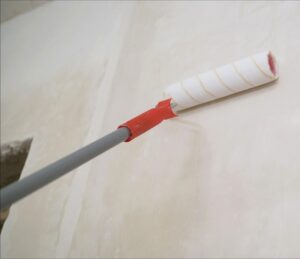
Priming means applying a preparation to the substrate that will prepare it for further finishing works.
The specific effects we want to achieve are:
- strengthening the ground,
- hardening it,
- leveling and reducing porosity,
- limited absorbency,
- dust elimination.
Priming facilitates even distribution of paints, ensures better adhesion and greater efficiency. It avoids subsequent peeling and peeling of the paint. It facilitates the application of adhesives, floors, plasters and other layers and guarantees that they will adhere better to the surface . At the same time, the primer protects the surface against fungi and molds, as well as prevents stains and discoloration.
If we do not prime the substrate or use a poorly selected primer emulsion , it may later turn out that all the work put into painting or plastering was wasted. Not to mention the cost of materials. That is why selecting the right primer and using it wherever it is needed is so important.
Which priming emulsion should I choose?
The available range of products for priming is so large that choosing the most suitable primer for our needs may prove to be a challenge. So here are some tips on what you should remember.
The first thing is the type of substrate . We can prime various surfaces – from concrete, through mineral plasters, to plasterboards. Let’s make sure that we choose a primer suitable for the given surface. However, if we want to prime the façade, we must purchase a priming emulsion that is suitable for external use . Therefore, it should be resistant to moisture and at the same time vapor permeable.
An equally important issue is what should be placed on the primed surface . Cheap primer, which is sufficient for paint or wallpaper, may not fulfill its role when we put gypsum plaster on it. The third thing to pay attention to is the performance of the primer emulsion . It can be assumed that 10 square meters per liter is quite a good level.
